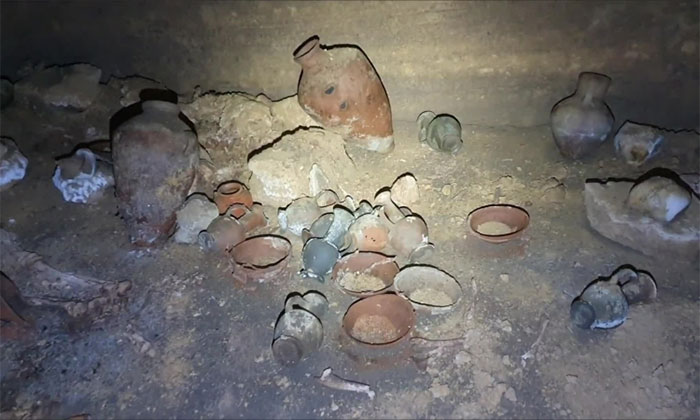An artificial cave containing skeletal remains and numerous artifacts from the time of Pharaoh Ramses II was discovered in a national park in Israel on September 13.
Video: IAA
The Israel Antiquities Authority (IAA) announced on September 18 that the cave was accidentally discovered when an excavator moved a boulder during construction at the Palmachim National Park, allowing sunlight to shine into the burial site.
Archaeologists had to use a ladder to descend into this 2.5-meter deep artificial square cave. They uncovered dozens of ceramic jars in various shapes and sizes, along with many bowls (some painted red, others containing bones), cups, cooking pots, storage jars, lamps, arrowheads, and bronze spearheads.
Dating indicates that the artifacts date back to the reign of Egyptian Pharaoh Ramses II, who ruled over Canaan, a region that largely corresponds to present-day Israel and Palestinian territories.
These items were burial offerings placed with the deceased for their final journey to the afterlife. At least one relatively intact skeleton was also found in two rectangular niches in the corner of the cave.

A large number of nearly intact artifacts found on the cave floor.

An archaeologist descending into the cave using a ladder. (Photo: IAA)
“This is a once-in-a-lifetime discovery!”, emphasized Eli Yannai, a Bronze Age expert at the IAA, in a press release. “The chance to find a cave that has remained undiscovered for 3,300 years with tools lying on the floor is extremely rare. It could provide a complete picture of burial customs during the late Bronze Age.”
Yannai believes that the ceramic jars originated from Cyprus, Lebanon, northern Syria, Gaza, and Jaffa, indicating that vibrant trade once occurred along the central Israeli coastline.
The cave is now closed and protected until excavation plans are implemented. However, the IAA reported that some artifacts were stolen shortly after the discovery and before the site was secured.


















































